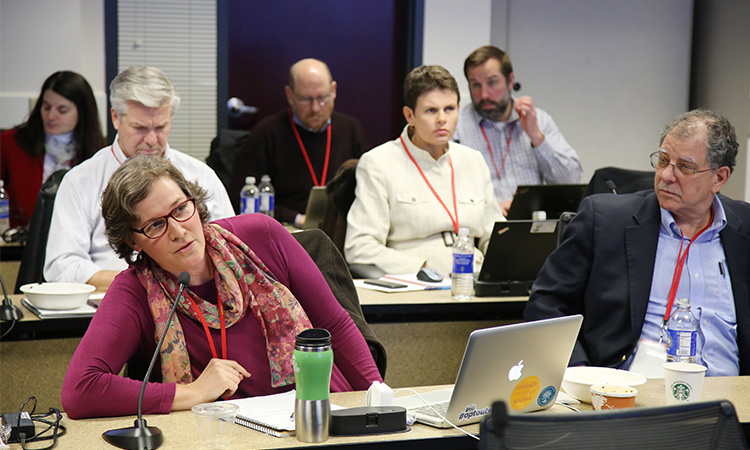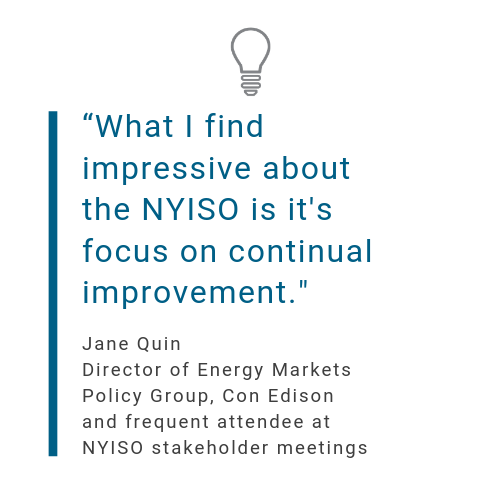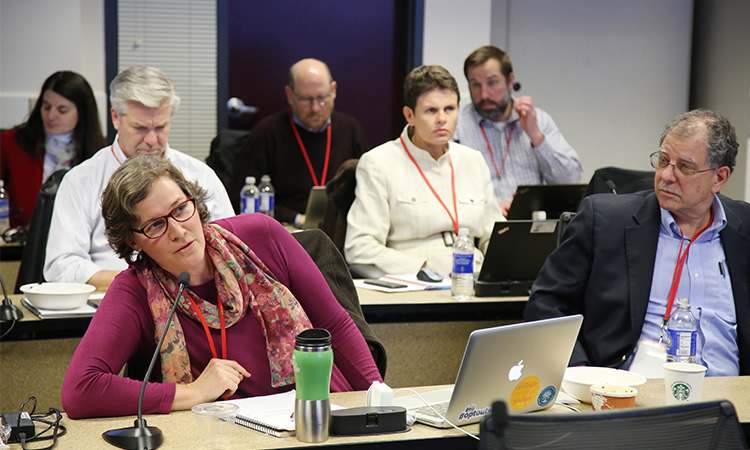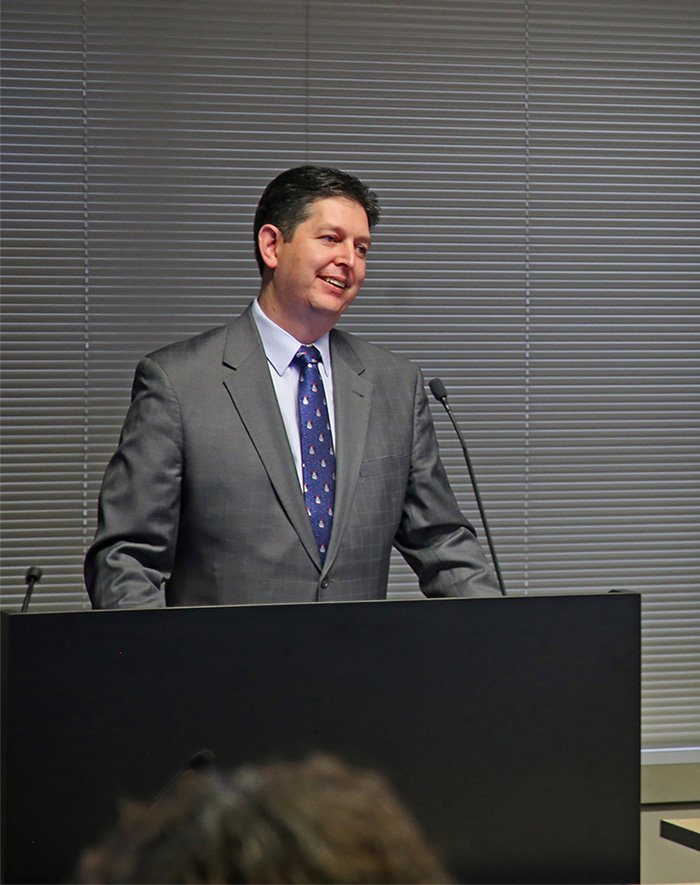Shared Governance: How Our Stakeholders Have a Voice in Shaping the Electric Grid

While independence is at the core of the NYISO’s mission, we don’t make decisions alone. The NYISO’s market policies, changes to our federally-regulated Tariffs (which guide grid management, system planning, and wholesale market rules), and other decisions related to the sale and transmission of power are all determined with input and approval by stakeholders.
This collaborative approach has been part of NYISO’s business model from the start, in order to ensure that individual interests could not unduly influence grid reliability or energy market outcomes.
“In our shared governance model, we have wholesale consumers and suppliers, along with investors in new technologies, working together to develop the best market design,” said Raymond Stalter, Director of Regulatory Affairs at the NYISO. “To do that successfully, we need to make sure we hear from all sides.”
Under the shared governance process, representatives from interested stakeholders work together almost daily in support of the NYISO’s mission to support transparency, reliability, and innovation. Stakeholders come from a wide range of backgrounds, including utilities and power producers and traders, regulators and policymakers, consumer interest representatives, and environmental advocates.
These stakeholders have a significant say in establishing priorities. Among their responsibilities, NYISO stakeholders have voting power to:
- Approve most proposed changes to our governing documents, including the federally approved tariffs. This responsibility is shared with the NYISO Board of Directors.
- Exercise responsibilities, including developing and adopting grid technical guidelines, shaping market design and system planning.
- Review and recommendation of Board of Directors candidates.
Stakeholder Input is Key to Success
“We view the stakeholder process as the keystone of the NYISO’s success,” said Jane Quin, Director of the Energy Markets Policy Group at Con Edison and a frequent attendee at NYISO stakeholder meetings. “It is critically important to a well-functioning energy market in New York.”

Quin, who has worked with the NYISO on many projects related to transmission and wholesale markets, said the shared governance process has helped the power industry in New York avoid contention.
"While change does not come easy in the stakeholder process and frequently is a time-consuming proposition, I think the attitude of being open to change, both by the NYISO staff and its market participants, is important.”

PHOTO: A market participant makes a comment during a recent Business Issues Committee meeting.
In all, governance members come from more than 150 organizations.
“I think the shared governance model makes a lot of sense,” said Michael Mager, an attorney for Multiple Intervenors, a group representing large New York power consumers.
“While it often takes longer than desirable at times, I think the final product is usually much improved over where things started,” said Mager. “It makes participation that much more meaningful.”
Majority Rules: Reaching for the Magic 58%
Under NYISO structure, committee decisions need at least 58 percent approval rate. It’s a threshold that assures that stakeholders with varying interests work together on issues. In a rare instance of a serious disagreement, stakeholders such as, for instance, power suppliers and utilities must “cross the aisle” and compromise in order to reach the majority threshold and pass projects under consideration.”

While the NYISO board makes the final decision, stakeholder input is given significant weight. “The board wants to see consensus,” said John Buechler, NYISO’s former executive regulatory policy advisor, and a power industry veteran who helped create the current governance structure in the late 1990s.
PHOTO: NYISO's Mike DeSocio listens to a stakeholder comment during a recent hearing.
Shared governance was introduced in 1999, when the New York Power Pool was turned into the much more expansive NYISO, with the specific purpose of leveling the playing field. Since then, more than 400 market participants have played an important role in how NYISO decisions are made.
"NYISO’s stakeholder governance process recognizes the important environmental consequences of its decisions by vesting environmental organizations with formal voting rights,” said Miles Farmer, Senior Attorney for the Natural Resources Defense Council. “Seeking input from a wide range of groups is the first step to making informed decisions that appropriately consider the public interest.”
Aaron Breidenbaugh, who represents New York City-based energy consumers as Director of Regulatory Affairs for Luthin Associates, agrees in the importance of giving stakeholders a vote that counts.
“It empowers everyone,” he said. “Broad stakeholder agreement is, and should be, needed to approve major reforms.”
Examples of significant market design elements fine-tuned through the shared governance process include:
- A Wind Forecasting system, AWS Truewind, to provide wind predictions to better balance the integration of wind resources to the electric grid. Wind-related revisions to the NYISO markets were approved through stakeholder discussions.
- Integration of renewables and rules and tools to lower barriers to entry for new technologies. The NYISO was the first to develop wind supply forecasting rules, and are applying those same rules to solar energy supply.
- Social cost of carbon pricing proposal, which is under development, to incorporate a carbon cost that creates greater incentives for emissions reductions from fossil fuel-based generators, while strengthening investment in carbon-free generation.
In Summary
Shared Governance is a collaborative approach that provides benefits for all participants. Shared Governance is fundamental to the New York ISO’s operation, mission, and success as one of the most innovative independent grid system operators in North America and, indeed, around the world.

